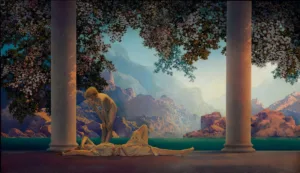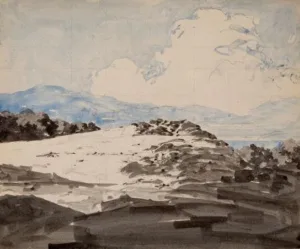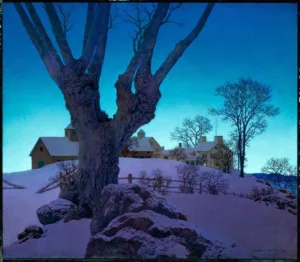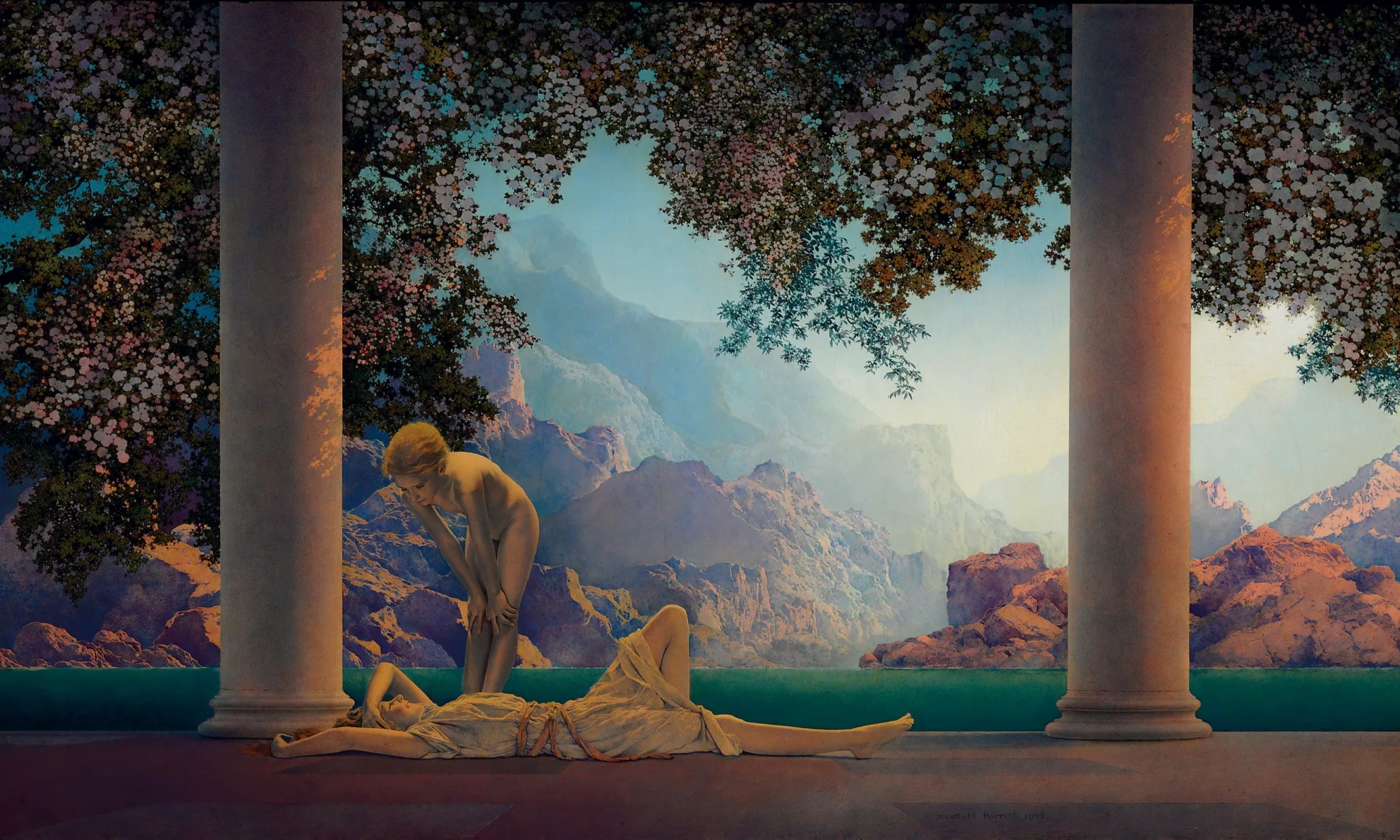
One of my students chatted with me recently about Maxfield Parrish. “I erroneously dismissed him as a pop artist for too long,” I told her. “He was that and much more.”
“What’s the difference between a fine artist and a pop artist?” she asked.
It was a bad choice of words on my part. There was a 20th century movement called Pop Art, which encompassed the likes of Roy Lichtenstein and Andy Warhol. It was fine art commenting on popular culture, rather than a part of popular culture. (The difference between Warhol’s Brillo boxes and the ones made by the soap company was that Warhol’s were in museums. Now even that distinction is blurred.)
I was talking about of the art equivalent to pop music, and I don’t think there’s a word for it. Parrish was part of the Golden Age of American illustration, along with N.C. Wyeth, Howard Pyle, Jessie Willcox Smith and others. Our modern concept of illustration doesn’t begin to encompass the range of their work. They were riding a revolution in printing technology, and they were visionary.

A world now gone
Parrish’s Daybreak was the most popular art print of the 20th century. At one time, one in four households had purchased one. Printing is so cheap for us today that we can hardly imagine what it meant a hundred years ago for working-class people to afford a color picture for the dining room, or to read books and magazines with color illustrations.
Today’s illustrators work to someone else’s idea. When Time orders up a caricature of the president for next week’s issue, the artist has little scope or time. In their heyday, magazine covers were self-contained paintings, often narrating a little story of the artist’s own invention. The Saturday Evening Post discovered Norman Rockwell, who went on to create more than 300 covers for them, and John Philip Falter, who did 120 covers. All the best magazines, ranging from Harper’s Bazaar to Life to Boys’ Life to Popular Science, hired top illustrators for their covers.

The best of them, including Parrish, were wildly successful. It’s not just that they were in it for the money; everyone is just in it for the money. It’s that they succeeded in making a great deal of it.
Today magazines are filled with photography. The only major magazine still using stand-alone art on its cover is The New Yorker. Meanwhile, there’s a surfeit of wall decoration available to us, ranging from bad department-store art to high-quality prints of masterpieces. There’s no room in the market for pop painters in the style of Maxfield Parrish.

Parrish can be credited with many things, including the craze for androgyny that has bedeviled fashion for a hundred years, and for introducing a shade of blue that now bears his name. He was a consummate commercial artist, but he could also really paint. In 1931, he told the Associated Press, “I’m done with girls on rocks,” and focused exclusively on landscapes, particularly those of his adopted home state of New Hampshire. They were never as popular as his nymphs, but he still made money. He painted until he was 91 and lived to a few months shy of 96. That’s a recurring trait among successful artists; painting is a healthy vocation.
My 2024 workshops:
- Sea & Sky at Schoodic, August 4-9, 2024.
- Find your authentic voice in plein air: Berkshires, August 12-16, 2024.
- Art and Adventure at Sea: Paint Aboard Schooner American Eagle, September 15-19, 2024.
- Immersive In-Person Workshop: Rockport, ME, October 7-11, 2024.


Thank you Carol- I wonder about the sentence- we are all in it for the money? As you know I have this not-for-profit tasg4peace things that I do while I am watching to TV. I take cards destined for the landfill and turn them into gift tags- with the short days and cold I have been processing card often and I am noticing that much of the “art” is computer generated. Bummer- so someone created a program for a snow flake and then it is just copy paste, copy paste. Larger smaller copy paste, red green copy paste. You get the idea. I thought well this is good for me because as a watercolorist there is nothing like the real thing…but it is kind of sad “art”. I do of course run into a bunch of T. Kincaid and mostly that is it for artist actually painting “art” on holiday cards. Bummer-
Love it. What do I say when someone asks are you going to retire? WHY would I stop doing what I love? I think it is the first nail in the coffin to “retire” from painting. Next do a list of the greats who lived to past ninety. And don’t forget Carmen Herrera.😉